Did you know that South Australia was one of the first places in the world to give women the right to vote? It was also the first place in the world to give women the right to run for Parliament. Browse through a snapshot of SA’s voting history.
We encourage readers to explore AIATSIS for a national context and a detailed exploration of First Nations history.
Aboriginal and Torres Strait Islander viewers are advised that this page contains images of deceased persons. Images sources have been included.
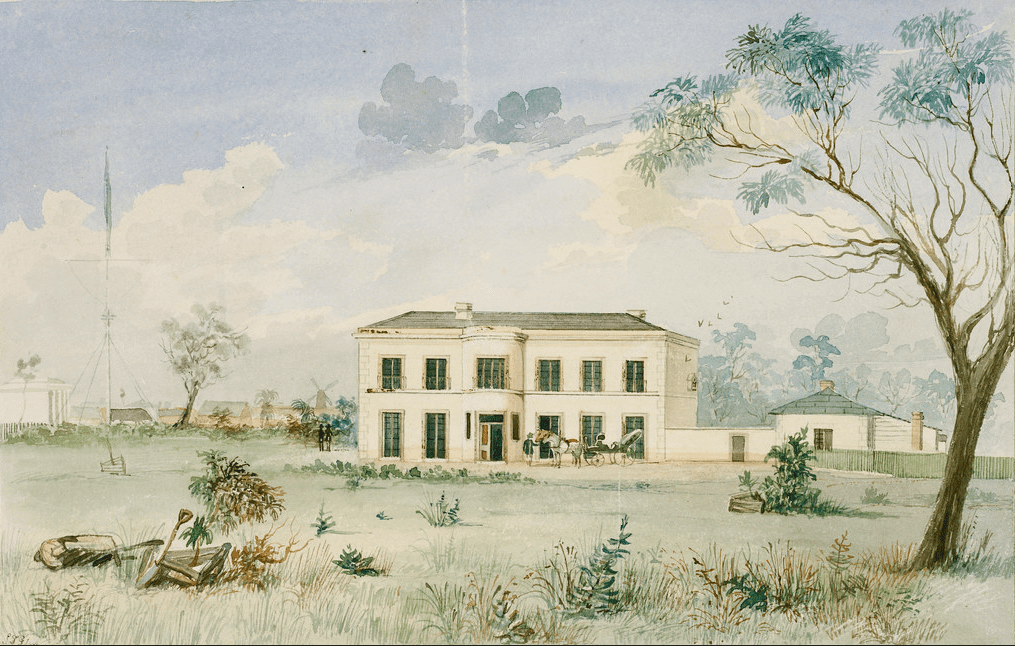
Government House, Adelaide 1830s
Image Credit: State Library of NSW
1836-1856
The South Australian Province was not a democracy. Most power was with the Governor, who was appointed by the Monarch and responsible to the British Government in Westminster.
From the 1840s, the Governor (still holding almost all legislative power) was advised by a Legislative Council, which was at first an appointed body, and by 1851 partially elected by property owning men.
By the mid-1850s, the demand for a true representative government was growing, and the Legislative Council began preparing to implement a democratic constitution for South Australia.
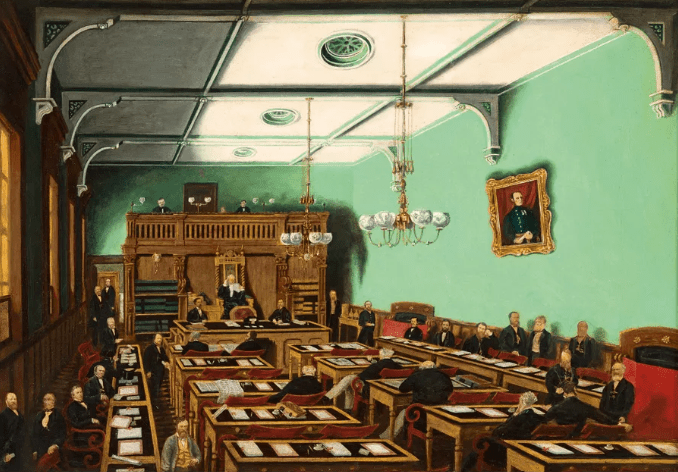
Old Parliament House, 1867
Image Credit: AGSA
1857
The South Australia Constitution Act (1856) provided South Australia with representative democracy, and a government responsible to an elected parliament.
The new Constitution allowed all men over the age of 21, including Aboriginal men, to vote for the lower house (House of Assembly) using a secret ballot.
The upper house (Legislative Council) became fully elected, but by property owning men.
These changes made the 1856 Constitution one of the most democratic in the world at the time, more democratic than other Australian colonies and even the United Kingdom itself.
Members of the first South Australian parliament were elected in 1857.
It is worth noting that even after South Australia made these changes women were still ineligible to vote. Also, while Aboriginal men were eligible, they still faced many barriers to participating in SA’s democracy.
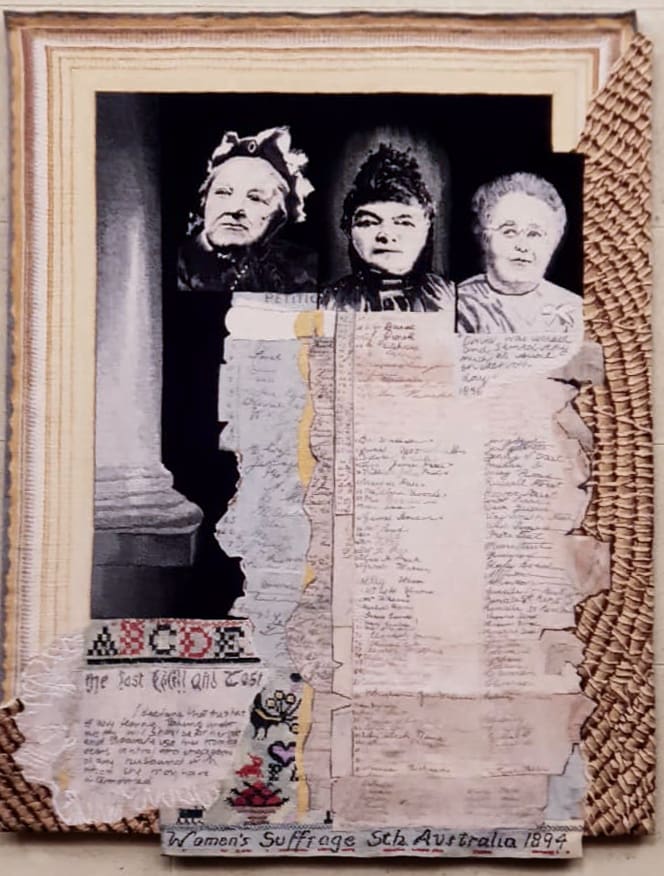
Suffrage Petition Tapestry in Parliament House
Image Credit: Parliament of South Australia
1894
The 1880s and 1890s saw the women of South Australia campaigning to participate in South Australia’s democracy.
Women such as Catherine Helen Spence, Mary Lee, and Elizabeth Webb Nicholls are examples of South Australian women asking for women’s voting rights (suffrage) during this time.
11,600 men and women from across the state signed a petition presented to the Parliament asking for the right to vote. Due to the huge number of signatures, the petition was 101 metres long.
In 1894 the Government, led by Premier Rt Hon Charles Cameron Kingston PC KC, passed the Constitutional Amendment (Adult Suffrage) Act after heated debate and opposition. It made South Australia one of the first places in the world (and first in Australia) to allow women to vote, and the very first place in the world to allow women to stand for election. These rights also extended to Aboriginal women in South Australia.
The women of South Australia would have their votes count for the first time in the election of 1896.
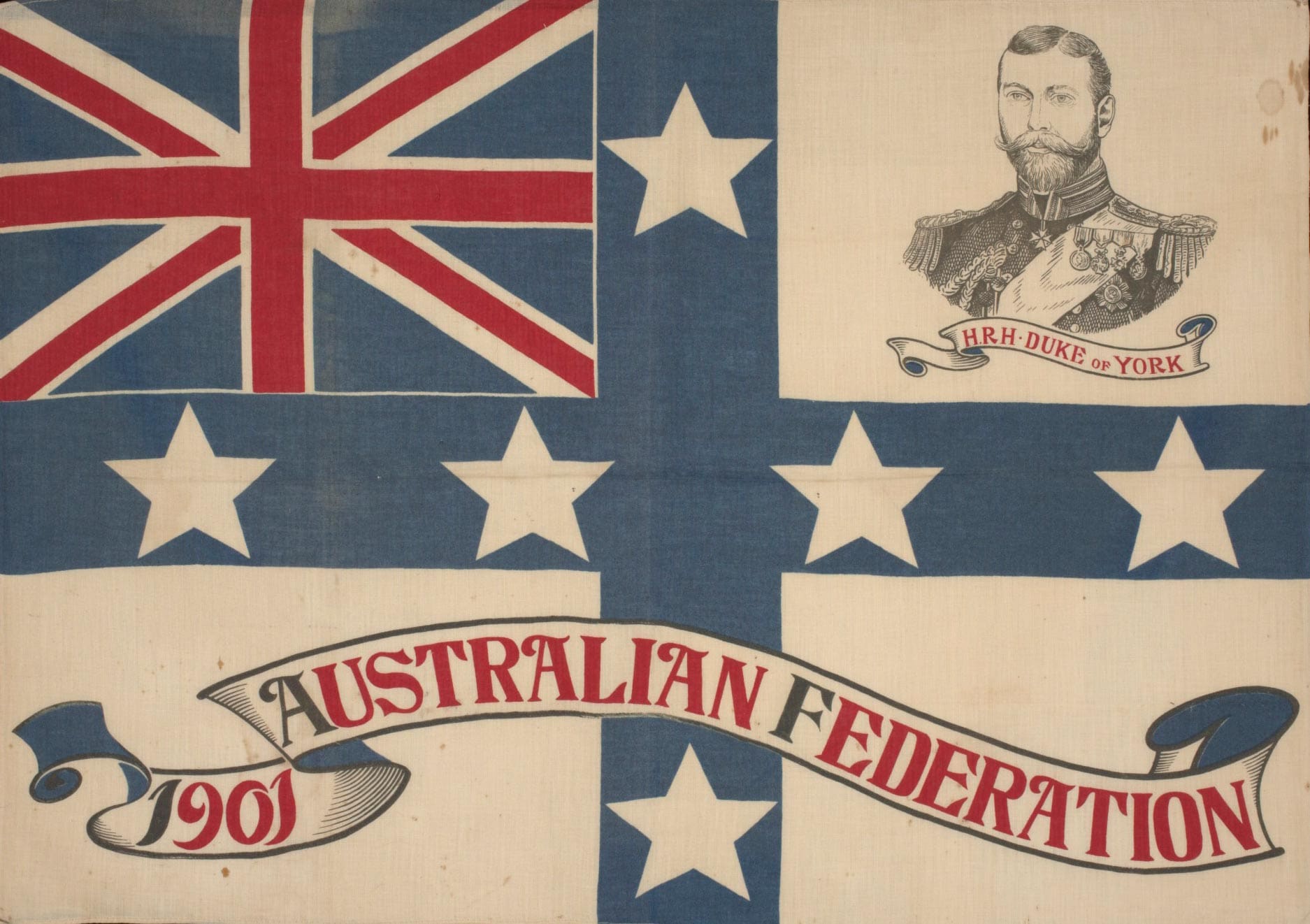
Federation Flag
Image Credit: National Museum of Australia
1894-1901
In the time leading up to the federation of the Australian colonies, South Australian delegates to the Constitutional Conventions argued for women’s voting rights in the new Commonwealth.
At the first Federal election over 29 and 30 March 1901, anyone eligible to vote for the lower house in each state parliament was eligible to vote for both the Senate and the House of Representatives. SA was successful in ensuring women and Aboriginal men and women could continue to vote.
In practice very few Aboriginal men and women were on South Australian electoral rolls as they either did not meet the residential requirement of residing at one address for enough time, and had not been encouraged to enrol. Most were not aware of their rights.
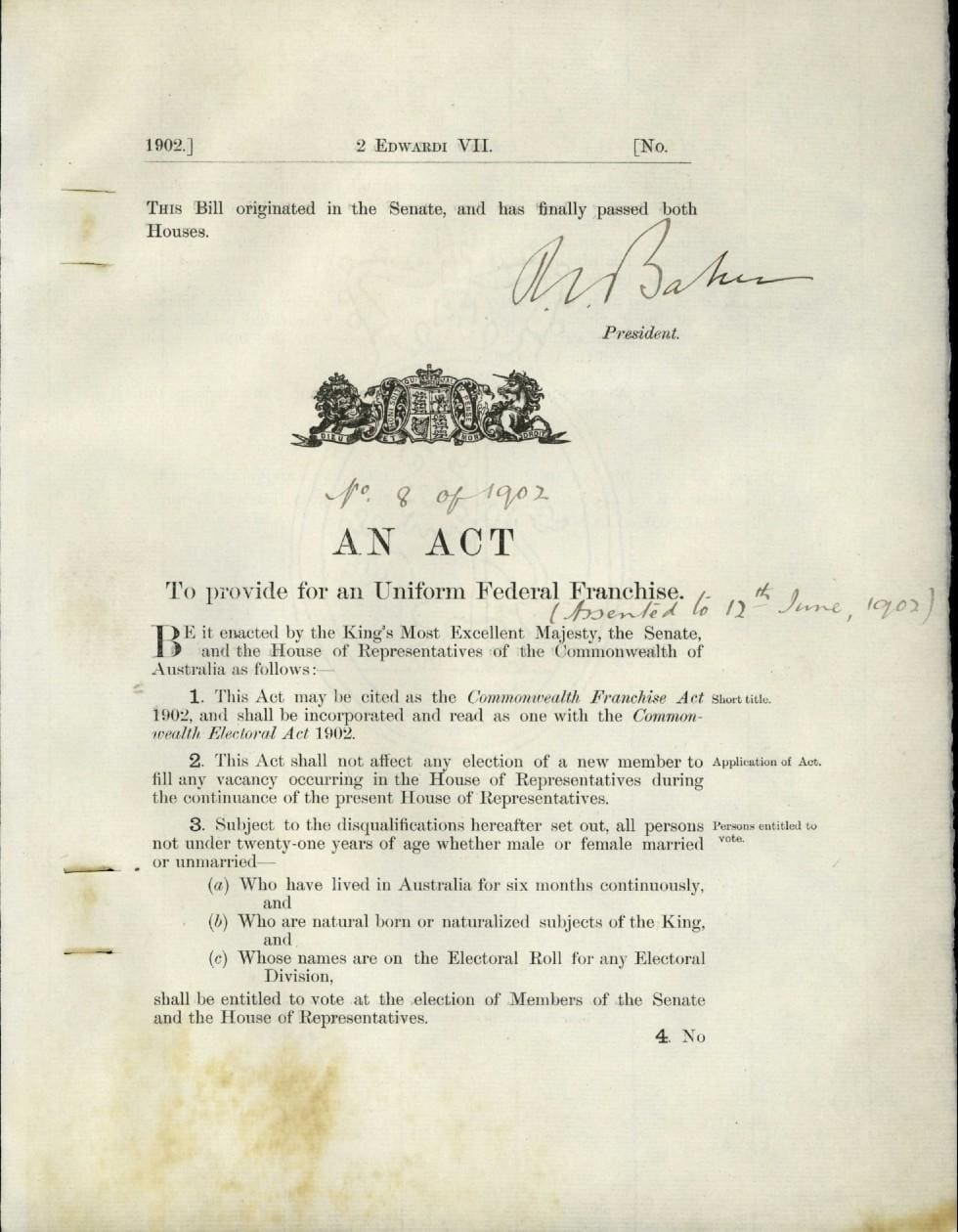
Commonwealth Franchise Act 1902
Image Credit: National Archives of Australia
1902
In 1902 the Federal Parliament passed the Commonwealth Franchise Act 1902 which granted white men and women the right to vote. Aboriginal people were excluded from this right unless they could already vote before 1901.
This should have protected the voting rights of Aboriginal people in South Australia, as they could already vote. But over the years, debate on the meaning of these laws, and decisions of electoral officials, resulted in many Aboriginal people losing their right to vote in Federal elections.

Early privacy screens
Image Credit: National Archives of Australia
1924
In 1924 voting was made compulsory for Federal elections
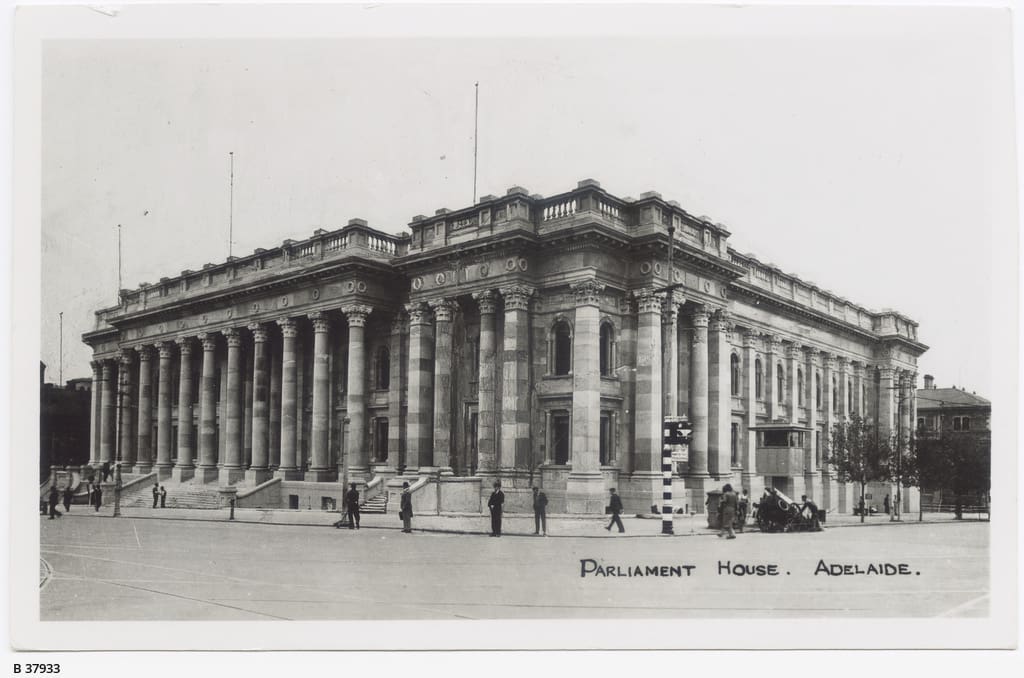
Parliament House in the 1940s
Image Credit: State Library of SA
1942
In 1942, voting was made compulsory for South Australian elections.
By this time, eligibility to vote for the South Australian Legislative Council had expanded from property owning men to:
- ministers of religion
- school head teachers
- postmasters
- railway stationmasters
- the officer in charge of a police station
- WWI and WWII veterans
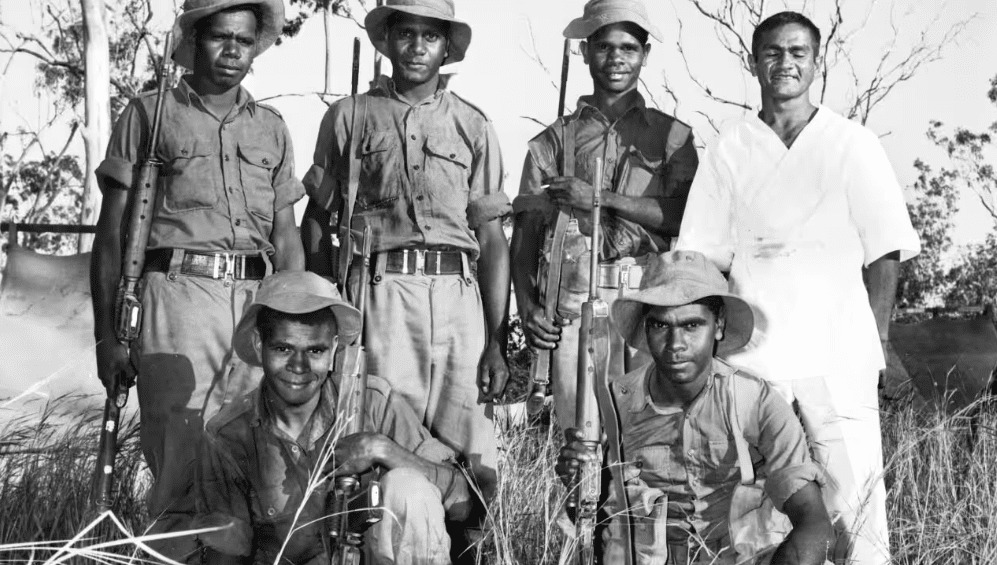
Soldiers
Image Credit: National Archives of Australia
1949
In March 1949 Prime Minister Ben Chifley introduced an amendment to the Commonwealth Electoral Act 1918. This extended the right to vote in federal elections to any First Nations person who had been a member of the defence forces.
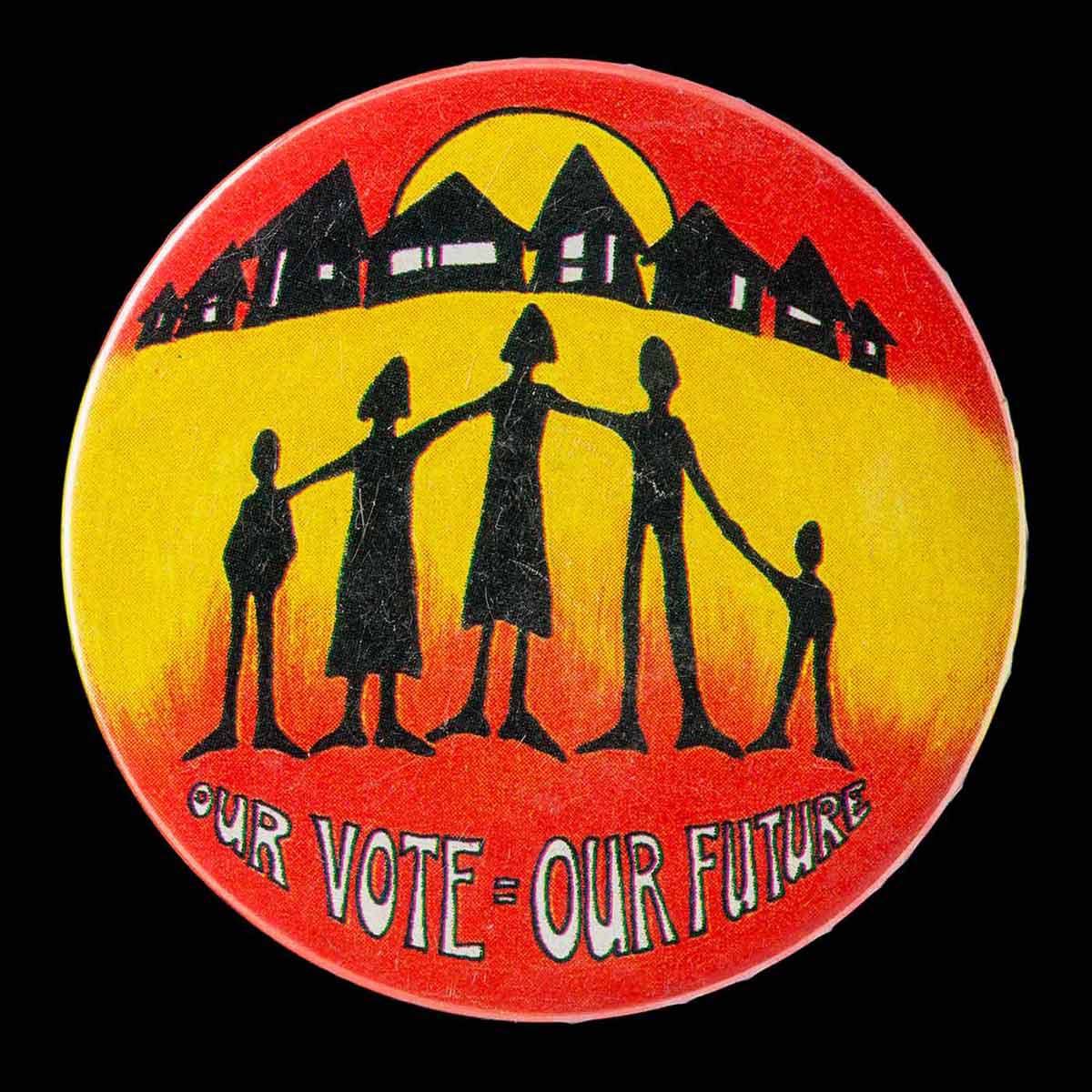
Campaign pin
Image Credit: National Museum of Australia
1962
The Commonwealth Electoral Act was amended in 1962 to grant First Nations people the vote. Enrolment was voluntary but once enrolled, voting was compulsory.
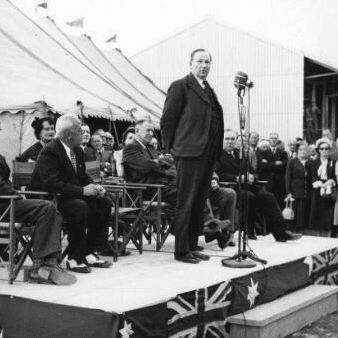
Sir Thomas Playford, Premier of SA
Image Credit: National Library of Australia
1968
1936 to 1968, South Australia had an issue: there were far more rural electorates than city electorates, despite there being far more people living in the city than the country. This meant that votes cast by people living in rural seats were worth up to ten times more than the votes of people living in Adelaide.
This was eventually reformed in 1968 when the seats were distributed to more fairly represent the population.
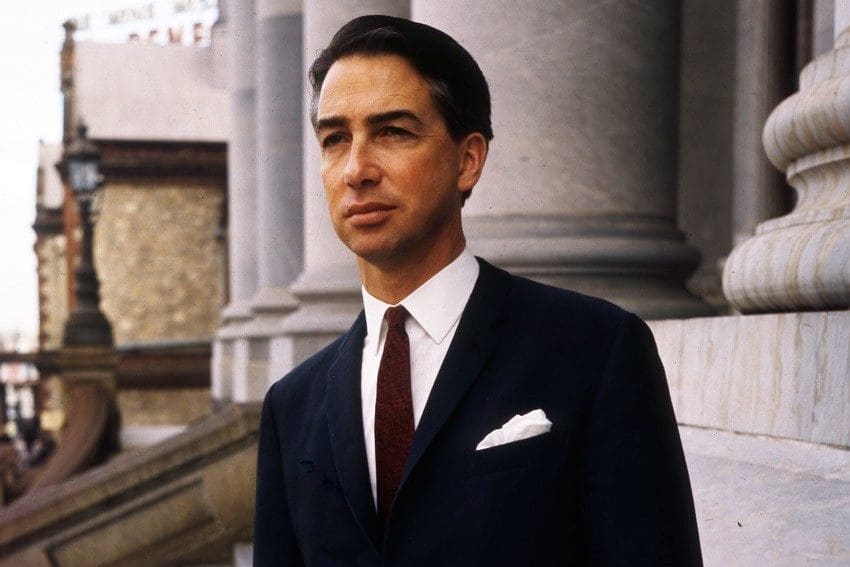
Don Dunstan, Premier of SA
Image Credit: State Library of SA
1973
Up to this point, it was still a requirement to own or rent property in order to vote in elections for South Australia’s Legislative Council. 1973 a major reform was passed to finally remove any property requirements in order to vote. This meant that all adult South Australians could vote for elections in both houses of the South Australian parliament with no barriers or restrictions.
Also in 1973, the Commonwealth Electoral Act was amended to lower the minimum voting age to 18 years.
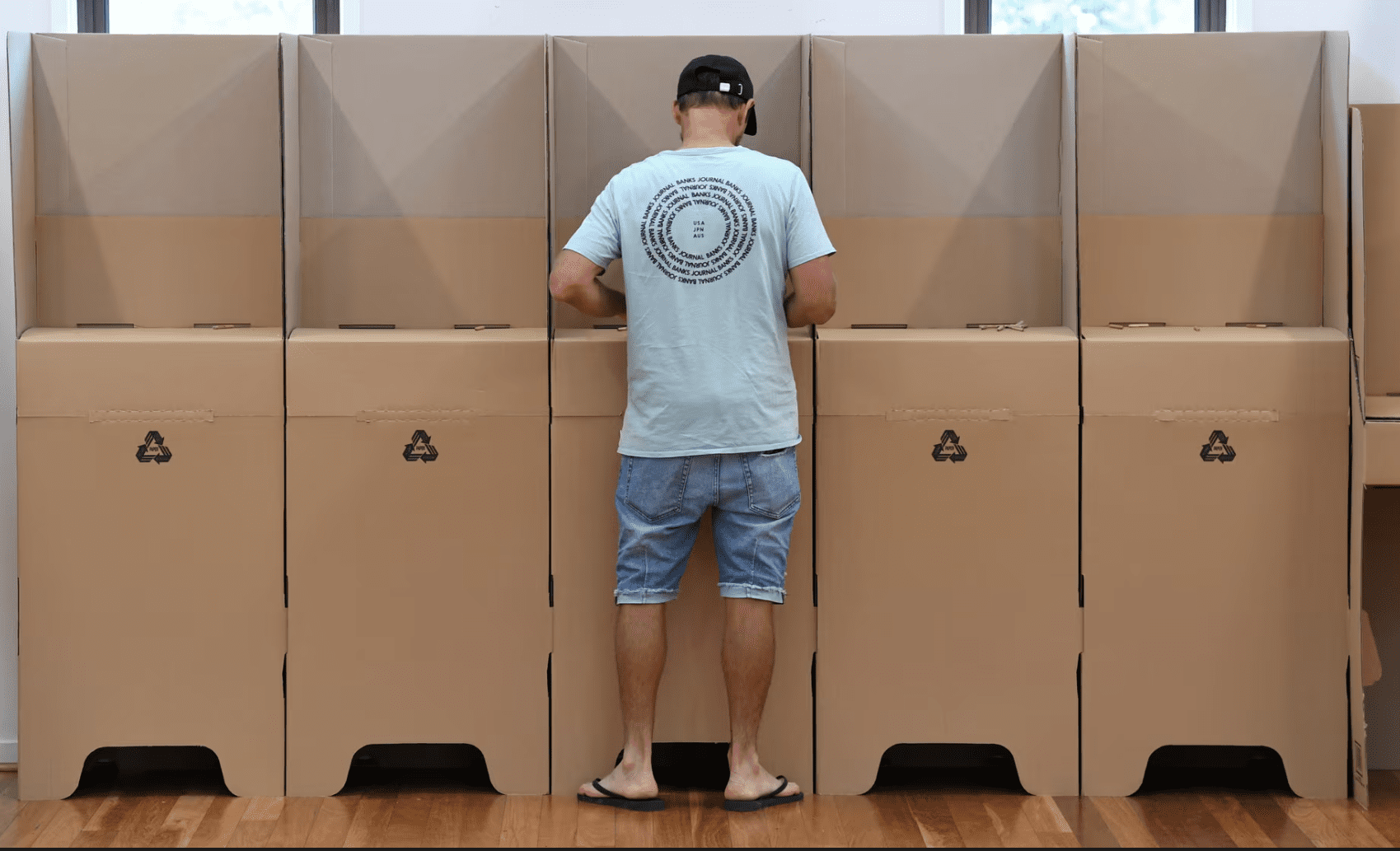
Current privacy booths
Image Credit: Getty Images
1984
In 1984, enrolment and voting became compulsory for all eligible electors.
